
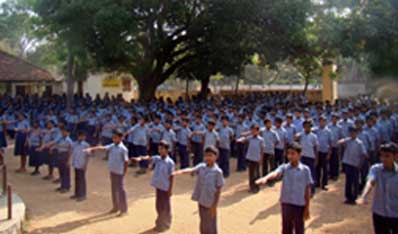
Life style changes, has been implicated as one of the major contributing factors for the epidemiological transition from communicable to non-communicable diseases (NCDs). During the last two decades the incidence of chronic non communicable diseases like diabetes, hypertension, obesity, heart disease, high cholesterol, cancers and mental illness have increased very much. This increase is mainly due to the faulty lifestyle like over eating, faulty foods, lack of exercise, change in job pattern, sedentary behaviour, increased mental stress and increased alcohol and tobacco consumption.
Among NCDs, diabetes merits special attention since estimates suggest exponential growth of burden of diabetes from epidemic to pandemic level. India shelters the most number of people with diabetes worldwide. In India, there were 31.70 million people with diabetes in the year 2000. It is estimated that the number of persons with diabetes in India would reach an alarming level of estimated 80 million by the year 2030.
Among NCDs, diabetes merits special attention since estimates suggest exponential growth of burden of diabetes from epidemic to pandemic level. India shelters the most number of people with diabetes worldwide. In India, there were 31.70 million people with diabetes in the year 2000. It is estimated that the number of persons with diabetes in India would reach an alarming level of estimated 80 million by the year 2030.
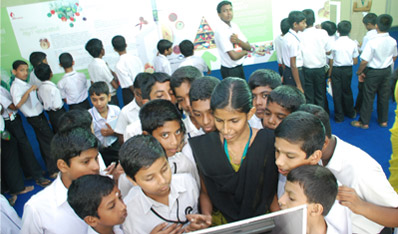
Evidence suggests that the prevalence of diabetes in Kerala too is registering an alarming increase. Only limited number of research studies on diabetes is available from Kerala. In the year 2000, Kutty et al found out the crude prevalence of diabetes among adults in Neyyatinkara Taluk of Kerala state to be 6.0%. The study also reported a difference in the prevalence of diabetes across geographic divisions. (urban: 12.7%, midland: 8.3%, highland: 5.5 % and coastal: 2.7%). ADEPS-2005 identified 9% reported prevalence and 10.5%prevalence of newly detected diabetics among semi-urban adults in Central Kerala.
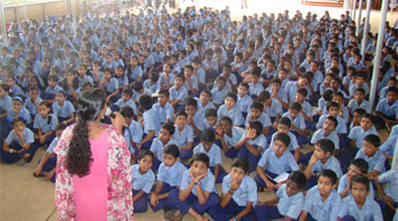
A situational analysis of the burden of diabetes and its determinants (SLICK 2007) was conducted by Medical Trust Hospital and Diabetes Care Centre, Kulanada in a rural village in Central Kerala during January to August 2007. The survey was conducted among the adult residents of two Panchayat wards in Central Kerala. The response rate (89 %) was one of the highest which could be expected in a community survey.
The overall crude prevalence of diabetes mellitus was 14.6 percent (241/1645). This is one of the highest reported from any Indian States. This is evidence that DM is fast percolating into rural community as well. The crude prevalence of diabetes mellitus among men was16.5 percent (103/624) and among women was 13.5 percent (138/1021). Among the 241diabetics, 198 (12.0 percent) were already known diabetics whereas the rest 43 (2.6 percent)were newly detected. The prevalence of impaired fasting glycaemia was 5.1 percent (84/1645), 5.4 percent (34/624) among men and 4.9 percent (50/1021) among women. Hence, one out of every five respondent (19.8 percent) was hyperglycaemic (men: 22.0 percent, women: 18.4 percent). The prevalence of impaired glucose tolerance was not estimated during the survey. If it had been done the prevalence rate of diabetes would have been much higher. 36.1% had hypertension and 34.9% had pre hypertension. Nearly (156) 10% of population had high fasting serum cholesterol above 240mg and another 28% had cholesterol between 200 and 240. Around 35% were either obese or overweight (BMI above 23). Among men 70% and among women 85 % have central obesity.
The overall crude prevalence of diabetes mellitus was 14.6 percent (241/1645). This is one of the highest reported from any Indian States. This is evidence that DM is fast percolating into rural community as well. The crude prevalence of diabetes mellitus among men was16.5 percent (103/624) and among women was 13.5 percent (138/1021). Among the 241diabetics, 198 (12.0 percent) were already known diabetics whereas the rest 43 (2.6 percent)were newly detected. The prevalence of impaired fasting glycaemia was 5.1 percent (84/1645), 5.4 percent (34/624) among men and 4.9 percent (50/1021) among women. Hence, one out of every five respondent (19.8 percent) was hyperglycaemic (men: 22.0 percent, women: 18.4 percent). The prevalence of impaired glucose tolerance was not estimated during the survey. If it had been done the prevalence rate of diabetes would have been much higher. 36.1% had hypertension and 34.9% had pre hypertension. Nearly (156) 10% of population had high fasting serum cholesterol above 240mg and another 28% had cholesterol between 200 and 240. Around 35% were either obese or overweight (BMI above 23). Among men 70% and among women 85 % have central obesity.
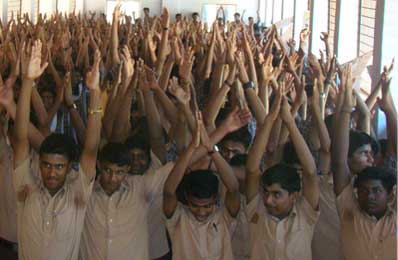
In order to curb this trend of dramatic increase in the number of diabetics among the rural community in Central Kerala, Medical Trust Hospital and Diabetes Care Centre, Kulanada has decided to take up a few intervention projects.
1. A free Community Health Centre was instituted in the area where the survey was conducted. All the residents of the village will be given free medical treatment. For that purpose a medical camp will be held once in a month. The Health Centre was inaugurated by Hon. Minister for Co-operation and Devaswom Sri. G. Sudhakaran on 7th November2008.
2. A more comprehensive project targeting the high school students and their teachers and parents of two districts –Alappuzha and Pathanamthitta- is also being implemented with the support of the World Diabetes Foundation. The project titled KNOW DIABETES is implemented in association Pathanamthitta District Panchayath and Alappuzha District Panchayath. The formal inauguration of the project was held on 25th November 2008.
1. A free Community Health Centre was instituted in the area where the survey was conducted. All the residents of the village will be given free medical treatment. For that purpose a medical camp will be held once in a month. The Health Centre was inaugurated by Hon. Minister for Co-operation and Devaswom Sri. G. Sudhakaran on 7th November2008.
2. A more comprehensive project targeting the high school students and their teachers and parents of two districts –Alappuzha and Pathanamthitta- is also being implemented with the support of the World Diabetes Foundation. The project titled KNOW DIABETES is implemented in association Pathanamthitta District Panchayath and Alappuzha District Panchayath. The formal inauguration of the project was held on 25th November 2008.
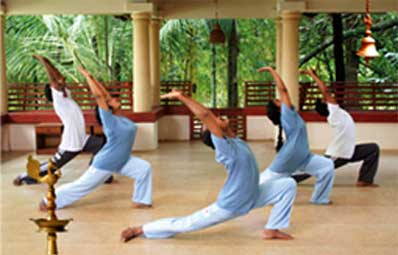
A group of volunteers including doctors, health educators, nurses, lab technicians, physiotherapists and yoga trainers are deputed to each centre for conducting the awareness classes and organizing medical camps.
The activities in a school begin with the display of charts and models so that students during intervals can go through them. During the awareness classes students are given basic information about:
1) Lifestyle diseases-introduction
2) Diabetes – basic facts
3) Diabetes – associated illnesses and complications
4) Diet and exercise
5) Yoga-apart from giving basic informations, interested and needed students are given special training.
The activities in a school begin with the display of charts and models so that students during intervals can go through them. During the awareness classes students are given basic information about:
1) Lifestyle diseases-introduction
2) Diabetes – basic facts
3) Diabetes – associated illnesses and complications
4) Diet and exercise
5) Yoga-apart from giving basic informations, interested and needed students are given special training.
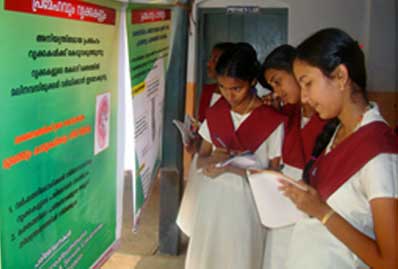
6) Behavioral modifications – harms of smoking, alcohol consumption and drug abuse.
7) Physical education –besides classes about the need of regular exercise, practical sessions are also conducted
8) Awareness classes are followed by anthropometric measurements and blood pressure recording. The results of the blood analysis will be distributed and those with diabetes or other lifestyle diseases are given detailed advice on lifestyle modification.
Awareness classes and medical camps are arranged on saturdays, sundays and other holidays for the benefit of parents and the general public. The health educators deputed to each centre are provided with necessary educational materials.
They include:
Short films - two films are already made :
1. Film ‘arogyanikethanam’ of length 1 hr 10 mts which introduces all the topics of the project.
2. Film ‘yoga’ of length 1 hr 05 mts which describes various asanas of yoga practice.
Books – two books are prepared :
1. Pramehavum mattu jeevithacharyarogangalum (mal) (diabetes and other lifestyle diseases)
2. Pramehavum aahaarakramavum (mal) Diabetes and Diet
3. Arogyam, aharam, vyayamam (mal) (health, diet and exercise)
Children’s plays and skits,
Powerpoint presentations
Presentations related to all the classes are prepared.
Banners and posters,
Charts and models,
Slides and Pamphlets.
A continuing health awareness programme:
The project envisages the setting up of a mechanism to continue the diabetes awareness programmes in all the school centres.
During the project period selected teachers from the centres will be given the necessary training so that they can be utilised as resource persons to continue the programme in future with the help and support of our staff.
By this time each centre will be equipped with the necessary educational materials also.
All these will finally culminate in target groups (students, parents and teachers) creating an environment in their vicinity (houses/schools) that help reduce the risky behavior.
These may include changing the diet pattern, allowing time and space for physical activity and the necessary initiatives to reduce mental stress.
7) Physical education –besides classes about the need of regular exercise, practical sessions are also conducted
8) Awareness classes are followed by anthropometric measurements and blood pressure recording. The results of the blood analysis will be distributed and those with diabetes or other lifestyle diseases are given detailed advice on lifestyle modification.
Awareness classes and medical camps are arranged on saturdays, sundays and other holidays for the benefit of parents and the general public. The health educators deputed to each centre are provided with necessary educational materials.
They include:
Short films - two films are already made :
1. Film ‘arogyanikethanam’ of length 1 hr 10 mts which introduces all the topics of the project.
2. Film ‘yoga’ of length 1 hr 05 mts which describes various asanas of yoga practice.
Books – two books are prepared :
1. Pramehavum mattu jeevithacharyarogangalum (mal) (diabetes and other lifestyle diseases)
2. Pramehavum aahaarakramavum (mal) Diabetes and Diet
3. Arogyam, aharam, vyayamam (mal) (health, diet and exercise)
Children’s plays and skits,
Powerpoint presentations
Presentations related to all the classes are prepared.
Banners and posters,
Charts and models,
Slides and Pamphlets.
A continuing health awareness programme:
The project envisages the setting up of a mechanism to continue the diabetes awareness programmes in all the school centres.
During the project period selected teachers from the centres will be given the necessary training so that they can be utilised as resource persons to continue the programme in future with the help and support of our staff.
By this time each centre will be equipped with the necessary educational materials also.
All these will finally culminate in target groups (students, parents and teachers) creating an environment in their vicinity (houses/schools) that help reduce the risky behavior.
These may include changing the diet pattern, allowing time and space for physical activity and the necessary initiatives to reduce mental stress.